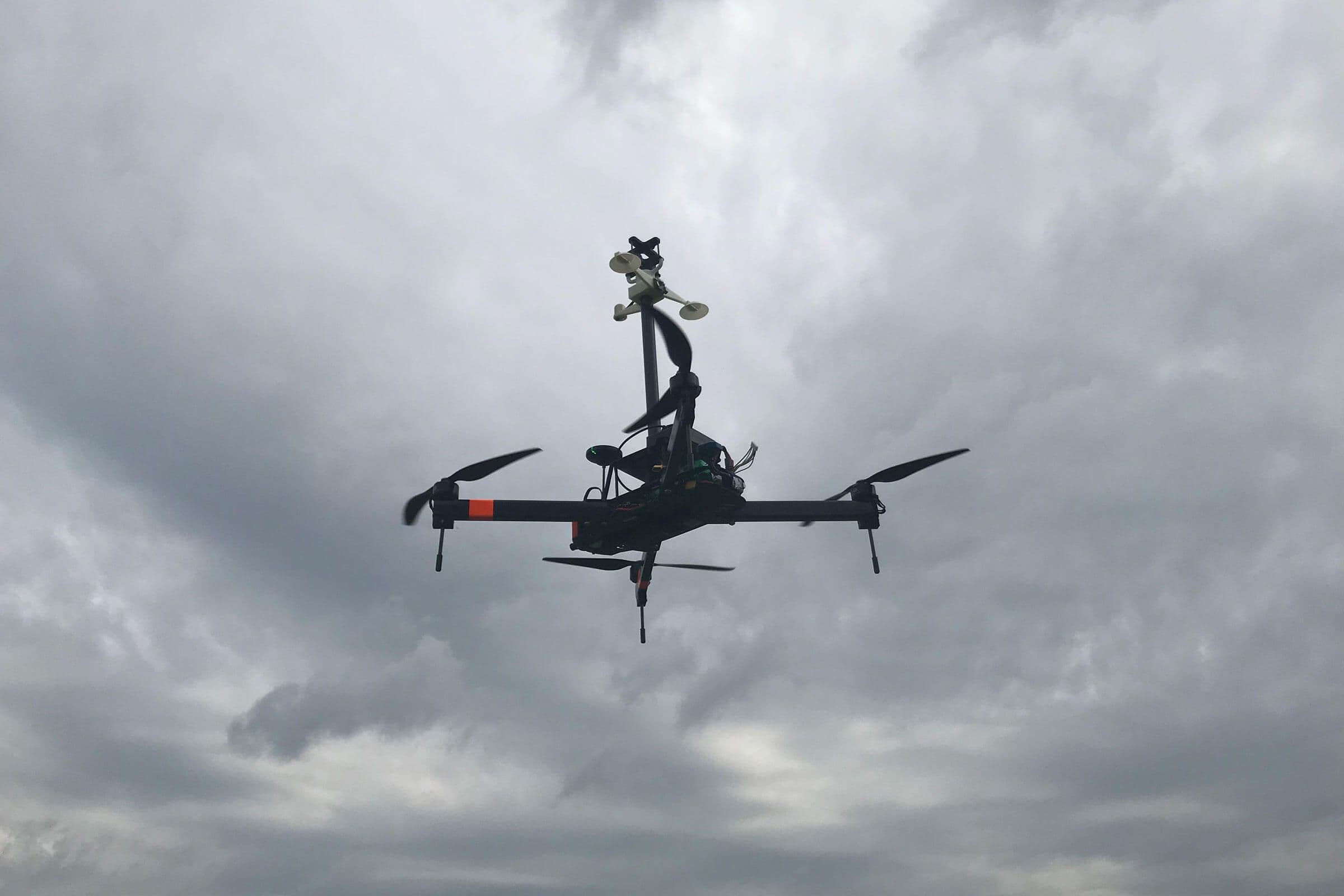For Alex Clark, Senior Engineer at AEgis Technology Group (now part of BlueHalo), measurements of wind and weather in the atmospheric profile – especially below 120 meters – are essential for numerical weather modeling. Clark and his team collected these measurements on behalf of the Space Missile Defense Command (SMDC) in support of efforts to understand how high-energy lasers propagate through the lower atmosphere. By estimating the Refractive-Index Structure Coefficient (also known as optical turbulence) using predictions from weather modeling, they hope to gain a better understanding of the effectiveness of high-energy systems.
Their goal is to measure air temperature at multiple places at the same instant in time, and in knowing temperature differences from node to node, be able to assess atmospheric interference. To accomplish this Clark deployed a small tethered unmanned aerial system (UAS) adjacent to a tower. The UAS was equipped with a sonic anemometer to measure parameters necessary to determine optical turbulence in the boundary layer.
Clark and his team selected the TriSonica® Mini Wind and Weather Sensor due to its small size, light weight, and measurement capabilities. The TriSonica® Mini measured wind speed, air temperature, barometric pressure, relative humidity, as well as 3-dimensional wind direction in five- to ten-meter increments during the sampling campaign, providing measurements that were critical to the modeling efforts.
In the real world, we’re trying to limit the size of our airframe, limit the SWaP (Size, Weight, and Power), and still collect accurate and meaningful data. Because of its SWaP attributes, the TriSonica Mini is the perfect complement to our payload package.
AEgis Technology Group (now part of BlueHalo) markets a complete and customizable meteorological sensor suite that incorporates the TriSonica® Mini specifically designed for Unmanned Aircraft Systems (UAS or drones). View the data sheet for the Atmospheric Characterization Payload.

“In the real world, we’re trying to limit the size of our airframe, limit the SWaP (Size, Weight, and Power), and still collect accurate and meaningful data. Because of its SWaP attributes, the TriSonica Mini is the perfect complement to our payload package.”
Purchase Online
Get a Quote